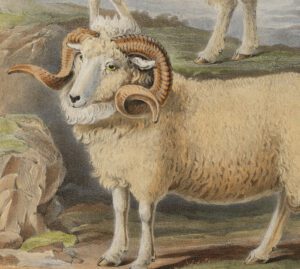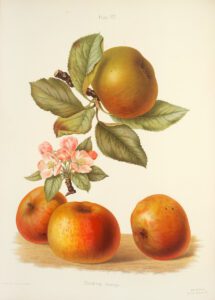Library

The library of The Museum of English Rural Life is the most significant specialist collection of printed material in the country for the study of the history of British agriculture, the countryside and rural society. Its role is to gather and make accessible resources which provide a record of rural life and agricultural history.
The collection of about 80,000 volumes includes rare books, modern reference works and publications, pamphlets and periodicals, from the 1500s to the present day.
Designed as a browsing library, the collection has its own classification scheme. There are uniquely accessible, extensive runs of historically significant farming and countryside journals from the nineteenth century onwards.
The very wide-ranging collections embrace subjects such as:
- farming through the ages
- agricultural technology
- history of food and diet
- perceptions of the countryside
- social history of the countryside
- garden and landscape history
- the politics of land use
- conservation issues
- local history

Partridge Cochins from The new book of poultry by Lewis Wright (1902), one of hundreds of poultry books in The MERL Library. - estate management
- rural crafts and industries
Early editions of publications by many important writers from the history of British agriculture are present, including works by Anthony Fitzherbert, Thomas Tusser, Walter Blith, John Worlidge, Arthur Young and Jethro Tull.
The library collections are complemented by material held in the University of Reading rare book collections (on the same site), particularly in the Overstone Library and the Reserve Collection.
Among the treasures of the collections is a 1471 edition of Crescentius’s Ruralia commoda, considered to be the first printed book on agriculture, husbandry and horticulture, and two copies of George Garrard’s A description of the different varieties of oxen, common in the British Isles (1800), an album of fine hand-coloured engravings of prize cattle.
Items from the library collections are on display in the Museum’s galleries where they tell the story of the English countryside, alongside items from the object and archive collections.
Items to look out for from ‘A Year on the Farm’ gallery:
The Herefordshire pomona : containing original figures and descriptions of the most esteemed kinds of apples and pears, (1876-1885).

When it was first published, this book was separated into seven parts, released over ten years between 1876 and 1885. It was a big project and an early attempt to record all the different varieties of apples and pears growing in Herefordshire at the time, many of which have now disappeared.
Today, the book fascinates its readers not only as a historical catalogue of fruit species, but also because of its startlingly realistic and beautiful illustrations. The pictures were first painted by Alice Ellis and Edith Bull using watercolours. They sent 441 paintings to Guillaume Severeyns, a lithographer in Belgium, who produced the chromolithographic plates, allowing the pictures to appear in the printed books.
The new farmer’s calendar ; or, Monthly remembrancer, for all kinds of country business [by John Lawrence] (1806).
This book begins with a calendar of tasks for the farmer for each month of the year. These tasks include making or repairing fences in January, planting carrot seed in March, harvesting in August and “fatting oxen and hogs” in December. The book was published in 1806, the fifth edition of a work written by the farmer and breeder John Lawrence (1753 – 1839), who was an early advocate of animal welfare and rights.
As Lawrence explains, the concept of the farming calendar as a means of conveying agricultural instruction has a long history and dates back to ancient times. This work was based on ‘The farmer’s kalendar’, written by the renowned agricultural writer, Arthur Young, first published in 1771.
Specialist subject collections
- Milling and Baking Collection
- Ministry for Agriculture, Fisheries and Food (MAFF) Collection
- Herd Book Collection
- Dairy Collection
- Robert Dawson Romany Collection
- Tools & Trades History Society Library
- Cowan Bee Collection
- Evacuee Collection
More information
- Search the collection via the catalogue
- Find out more about searching and browsing our collections, with guides to books on popular topics which can be found in our library
- The MERL Library and other collections are available for consultation via the Reading Room
- Please contact us about your research, we may have a reading list of relevant items
- The Rural History Bibliography 2001 to 2021 is a selective list of journal and book articles relating to agrarian history. It is also published in Agricultural History Review.
